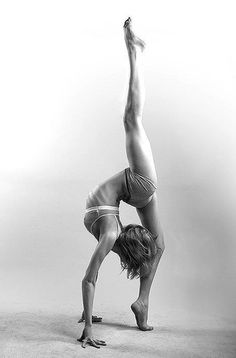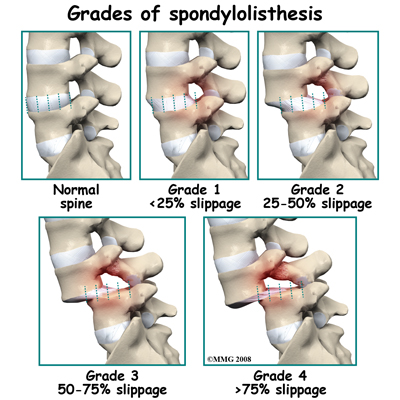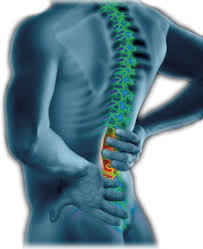Lower Back Pain and Spondylolisthesis

Although the experience of low back pain can be the result of a multitude of reasons, one possibility is that of a ‘spondy’. This particular presentation is more common in the younger population of dancers and gymnasts than other young athletes that don’t require such extreme ranges in flexibility.
What is a spondyloythesis?
A spondylolisthesis refers to the displacement of one vertebrae in relation to the one below. The displacement can be anterior (forward) or posterior (backwards) displacement. Forward slippage of one vertebra on another is referred to as anterolisthesis, while backward slippage is referred to as retrolisthesis.
The condition is graded according to the degree of slippage of one segment upon the other.

- grade II is between 26%-50%
- grade III is between 51%-75%
- grade IV is between 76% and 100%, and
- grade V, or spondyloptosis, occurs when the vertebra has completely fallen off the next vertebra.
Why does this occur?
Well, there are several reasons this problem can arise:
- Congenital – the defect in the vertebrae occurs at birth and often in the facet region.
- Repeated trauma – the defect is in a portion of the vertebra called the ‘pars interarticularis’. This type of spondylolisthesis can be caused by repetitive trauma and is more common in athletes exposed to hyperextension motions including those seen in gymnastics and dance.
- Degenerative spondylolisthesis occurs due to arthritic changes in the joints of the vertebrae due to cartilage degeneration. This is more common in older patients.
- Traumatic spondylolisthesis is due to direct trauma or injury to the vertebrae. This can be caused by a fracture of the pedicle, lamina or facet joints that allows the front portion of the vertebra to slip forward with respect to the back portion of the vertebra.
- Pathologic spondylolisthesis is caused by a defect in the bone caused by abnormal bone, such as from a tumour.
Diagnosis
The condition can be easily identified using a standard film x-ray. A lateral x-ray (from the side) will show if one of the vertebrae has slipped forward compared to the adjacent vertebrae.
This will then be confirmed with some manual tests in performed clinic by the physiotherapist.
 Symptoms
Symptoms
It is not uncommon for a person with a spondylolisthesis to present with no symptoms at all.
The most common symptom, however, of a low grade slippage (<50%) is that of lower back pain.
If an anterolisthesis has been discovered, back pain symptoms will often be activity related and worsen with extension of the lumbar spine (back bend)
Other common symptoms include tightness of the hamstrings and decreased range of motion and stiffness of the lower back. Changes in gait (walking) and posture are very common and an increased lumbar curve and forward tilted pelvis can be quite common.
If the severity of the slippage is more severe, then the symptoms can include pain, numbness, tingling or weakness in the legs due to nerve compression and irritation. Severe compression of the nerves can even cause loss of control of bowel or bladder function (cauda equina syndrome). This is very serious and requires immediate medical attention.
Treatment
Treatment will want to look at normalising general movement and spinal mechanics to offload the symptomatic area of the spine and create balanced movement to the rest of the spine.
If the injury is due to repeated trauma and loaded hyper-extension, treatment will need to address this non-optimal movement patterning that has overloaded this specific area. An area that moves too much will have a corresponding area that doesn’t move enough somewhere else in the body. This will need to be found and treated.
Focus of treatment:
- Allow the body to find centre again so that the muscles and joints can find their resting length.
- Assess and train a good deep core system. This is essential to stabilise the vertebrae with movement (deep multifidus/back core).
- Dynamic posture will also need to be re-trained as will gait (walking)
- Allowing normal movement back into the pelvis, thorax and hamstrings will help to reduce symptoms of tightness and offload the posterior chain.
- Technique of back bends, lay outs, arabesques etc will need to be addressed. These are often trigger movements for low back strain.
For more serious cases surgery may be required, where results can be very successful.
Rehabilitation will need to be gradual and structured starting from the inside out and from isolation of the muscle systems to integration into dance moves and full choreography.
There is no need to fear movement and spinal extension after a good rehab programme.

If you have any further questions or require assistance with your dance rehab we will be very happy to guide you further at Perfect Form Physiotherapy – contact on (02) 99227721 or visit www.perfectformphysio.com












